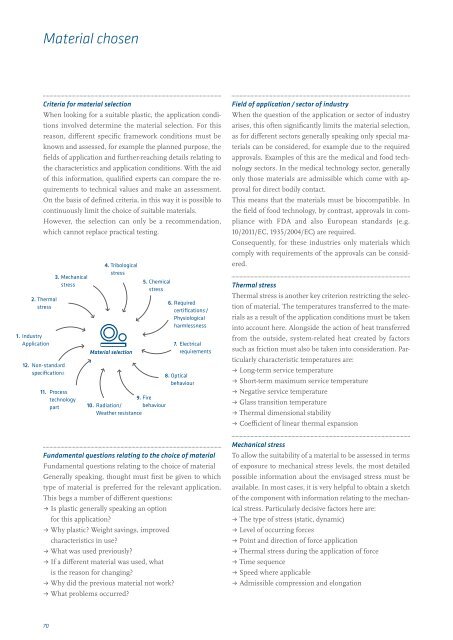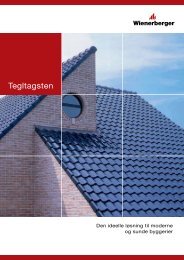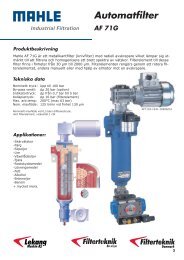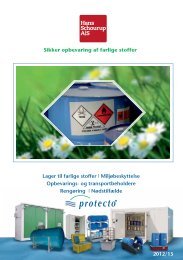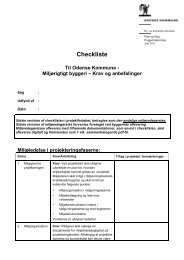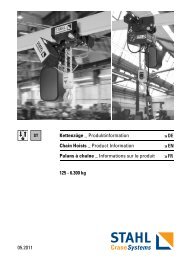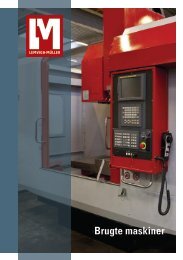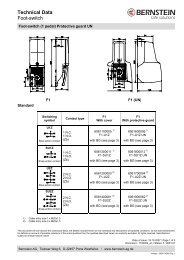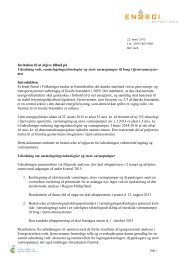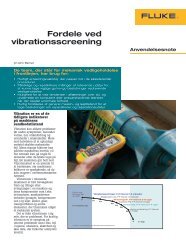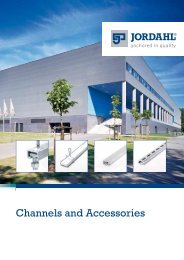Engineering plastics â The Manual - F.wood-supply.dk
Engineering plastics â The Manual - F.wood-supply.dk
Engineering plastics â The Manual - F.wood-supply.dk
Create successful ePaper yourself
Turn your PDF publications into a flip-book with our unique Google optimized e-Paper software.
Material chosen<br />
Criteria for material selection<br />
When looking for a suitable plastic, the application conditions<br />
involved determine the material selection. For this<br />
reason, different specific framework conditions must be<br />
known and assessed, for example the planned purpose, the<br />
fields of application and further-reaching details relating to<br />
the characteristics and application conditions. With the aid<br />
of this information, qualified experts can compare the requirements<br />
to technical values and make an assessment.<br />
On the basis of defined criteria, in this way it is possible to<br />
continuously limit the choice of suitable materials.<br />
However, the selection can only be a recommendation,<br />
which cannot replace practical testing.<br />
2. <strong>The</strong>rmal<br />
stress<br />
1. Industry<br />
Application<br />
12. Non-standard<br />
specifications<br />
3. Mechanical<br />
stress<br />
11. Process<br />
technology<br />
part<br />
4. Tribological<br />
stress<br />
Material selection<br />
5. Chemical<br />
stress<br />
9. Fire<br />
10. Radiation/ behaviour<br />
Weather resistance<br />
6. Required<br />
certifications /<br />
Physiological<br />
harmlessness<br />
7. Electrical<br />
requirements<br />
8. Optical<br />
behaviour<br />
Field of application / sector of industry<br />
When the question of the application or sector of industry<br />
arises, this often significantly limits the material selection,<br />
as for different sectors generally speaking only special materials<br />
can be considered, for example due to the required<br />
approvals. Examples of this are the medical and food technology<br />
sectors. In the medical technology sector, generally<br />
only those materials are admissible which come with approval<br />
for direct bodily contact.<br />
This means that the materials must be biocompatible. In<br />
the field of food technology, by contrast, approvals in compliance<br />
with FDA and also European standards (e.g.<br />
10/2011/EC, 1935/2004/EC) are required.<br />
Consequently, for these industries only materials which<br />
comply with requirements of the approvals can be considered.<br />
<strong>The</strong>rmal stress<br />
<strong>The</strong>rmal stress is another key criterion restricting the selection<br />
of material. <strong>The</strong> temperatures transferred to the materials<br />
as a result of the application conditions must be taken<br />
into account here. Alongside the action of heat transferred<br />
from the outside, system-related heat created by factors<br />
such as friction must also be taken into consideration. Particularly<br />
characteristic temperatures are:<br />
ˌˌLong-term service temperature<br />
ˌˌShort-term maximum service temperature<br />
ˌˌNegative service temperature<br />
ˌˌGlass transition temperature<br />
ˌˌ<strong>The</strong>rmal dimensional stability<br />
ˌˌCoefficient of linear thermal expansion<br />
Fundamental questions relating to the choice of material<br />
Fundamental questions relating to the choice of material<br />
Generally speaking, thought must first be given to which<br />
type of material is preferred for the relevant application.<br />
This begs a number of different questions:<br />
ˌˌIs plastic generally speaking an option<br />
for this application?<br />
ˌˌWhy plastic? Weight savings, improved<br />
characteristics in use?<br />
ˌˌWhat was used previously?<br />
ˌˌIf a different material was used, what<br />
is the reason for changing?<br />
ˌˌWhy did the previous material not work?<br />
ˌˌWhat problems occurred?<br />
Mechanical stress<br />
To allow the suitability of a material to be assessed in terms<br />
of exposure to mechanical stress levels, the most detailed<br />
possible information about the envisaged stress must be<br />
available. In most cases, it is very helpful to obtain a sketch<br />
of the component with information relating to the mechanical<br />
stress. Particularly decisive factors here are:<br />
ˌˌ<strong>The</strong> type of stress (static, dynamic)<br />
ˌˌLevel of occurring forces<br />
ˌˌPoint and direction of force application<br />
ˌˌ<strong>The</strong>rmal stress during the application of force<br />
ˌˌTime sequence<br />
ˌˌSpeed where applicable<br />
ˌˌAdmissible compression and elongation<br />
70


